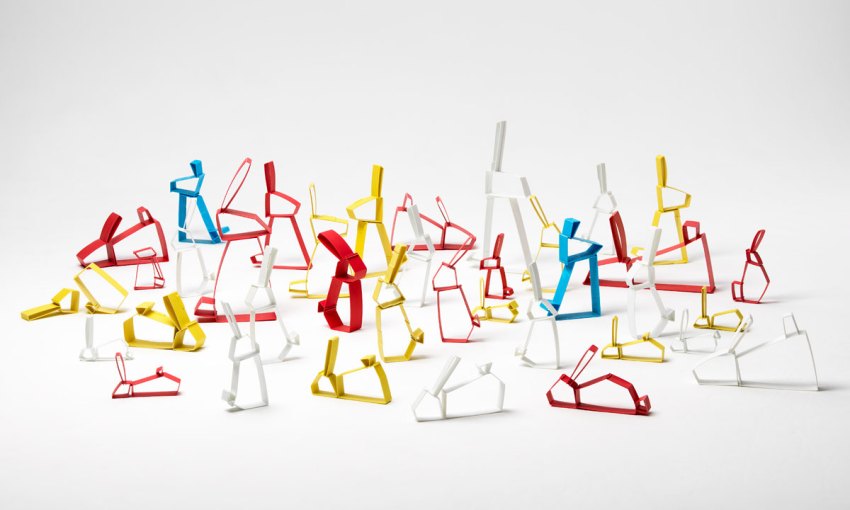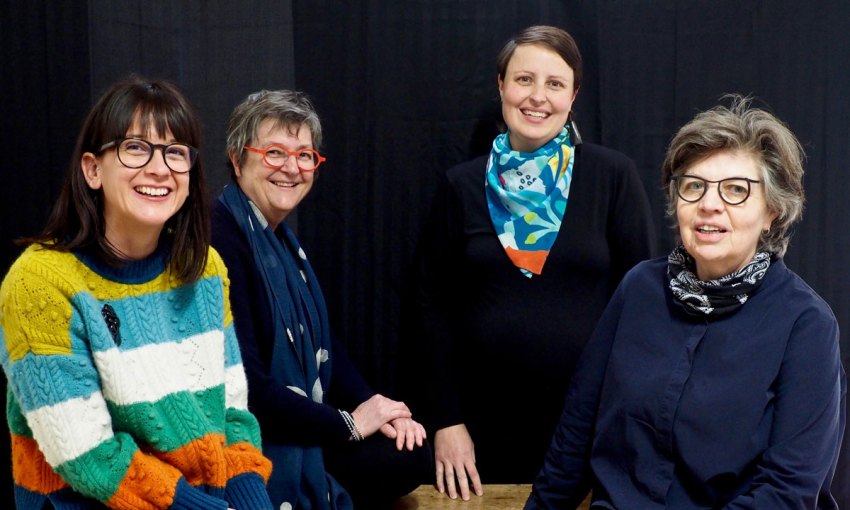Discarded plastic toys are repurposed into colourful, flamboyant and thought-provoking artworks by Lisa Furno – the newest partner of Adelaide’s ever-evolving Gray Street Workshop.
Lisa Furno turns discarded plastic into something fantastic
A collectively run studio for artists working in contemporary jewellery and object-making, Gray Street Workshop celebrates its 35th anniversary this year – making it one of the longest-running arts entities of its type in the country.
It has changed focus and location a number of times over the years, with jewellery maker Jess Dare joining founders Catherine Truman and Sue Lorraine to become a third partner in the venture in 2010.
Connect
Gray Street Workshop
Lisa Furno
Now, Lisa Furno has come on board as partner number four, occupying a work space at the front of the Thebarton cottage that Grey Street now calls home.
“Everyone is very different in their practice but we’re all looking to keep our practice going – that’s something that I’ve committed to by becoming a partner,” Lisa tells CityMag during a chat in the workshop’s kitchen looking out to a tranquil garden area.
“I believe in everyone’s practice here and they’re so nurturing with artists. It’s important to keep that alive.
“Craftsmanship is a beautiful thing and I think everyone needs it in their life.”
Lisa has been making colourful and eccentric jewellery pieces for around 14 years.
Her career began with an Advance Diploma in Jewellery and Object Design at the Enmore Design Centre in Sydney, and from 2011 until 2015 she was a tenant at Gray Street Workshop in its former premises in Sydney Place in the Adelaide CBD, before completing a Bachelor of Visual Arts in Jewellery and Metal at UniSA.
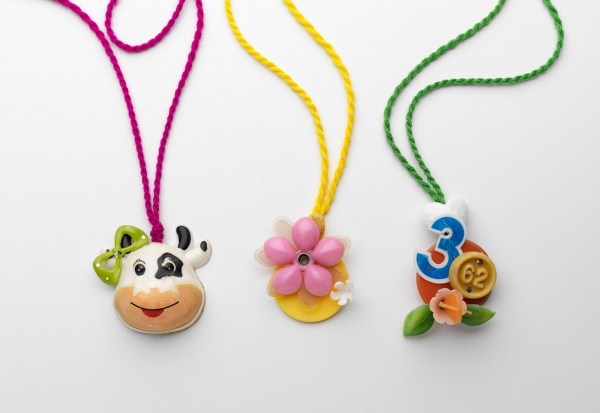
Let’s Hitch a Ride and Pick Embroidered Flowers – pendants made by Lisa from plastics found in Burma, Laos and Cambodia. Photo: Grant Hancock
As an artist, she has always been drawn to scavenged plastics and other recycled materials, using them to create works that challenge our throwaway culture.
Some of her pieces are made from discarded plastic objects she picked up on the streets while travelling through Asia five years ago; others incorporate bits and pieces from op shops and hard rubbish.
One of her favourite creations is a neckpiece called “The Squid has a Mexican moustache”, made of all manner of plastic things – from broken forks and small balls, to fire hydrant tags.
“It’s an absolutely crazy piece,” she says.
“I got all these bits and pieces, melted them together with the heat gun and then strapped them all up – it’s a complete party.
“I don’t think I’d ever be able to sell that piece… it’s got my heart.”
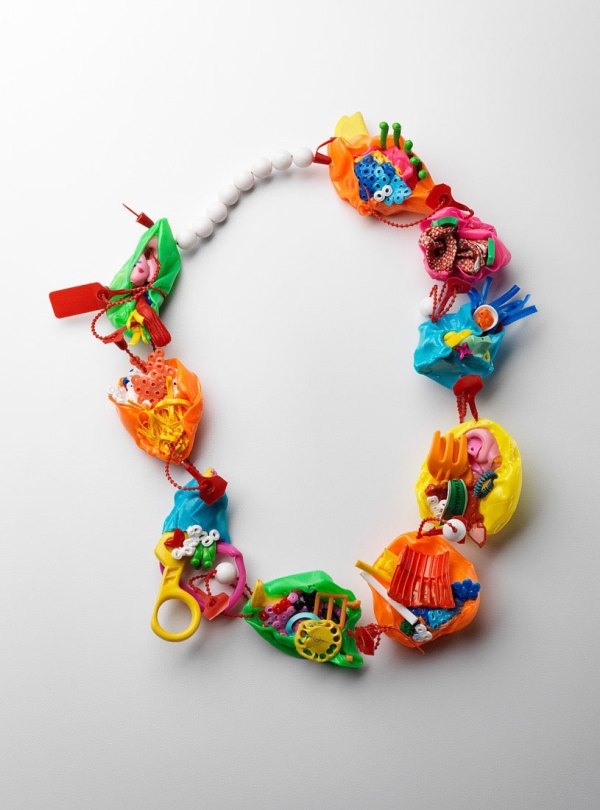
The Squid has a Mexican Moustache, by Lisa Furno. Photo: Grant Hancock
Since having her daughter three years ago, Lisa’s concern about over-consumption and excess waste has become more personal, driving her to question the ethics of indoctrinating young children into a consumer culture.
“I get a bit annoyed with the amount of plastic that’s in kids’ toys – literally, the toy lasts five minutes and then it’s chucked in the bin.”
For her latest project – a large installation called Bunnies comprising more than 70 rabbit-like objects – she used second-hand and deteriorated plastics from children’s cubby houses, pools and slides collected from the roadside.
“It was done during COVID, so I was at home pushing out a lot of bunnies,” she says. “It’s to reference the mass production of the world we live in and how that’s pushed on children.
“Also, the bunnies’ heads come off as well, so when they’re in the installation a few of them will slowly tumble off.”
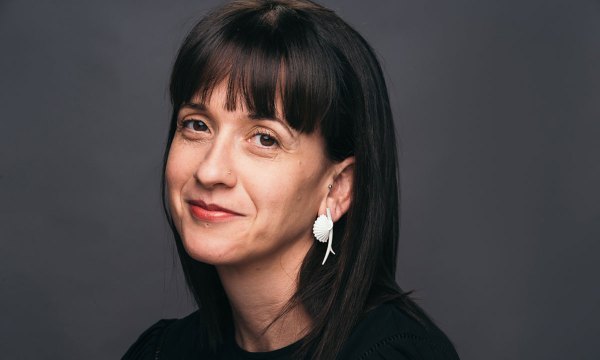
Artist Lisa Furno.
The series of bunnies are Lisa’s first installation, and were created after she received a grant to do a 15-month mentorship with Gray Street co-founder and partner Catherine Truman, an established jeweller and object maker who works across the disciplines of art and science and was the 2016 SALA feature artist.
Lisa used the mentorship to completely re-evaluate her art practice. She wanted to move away from specifically making jewellery – “to loosen up a bit, I suppose”.
“I felt after having my child that me and my practice were completely not matching; I felt like I had almost grown out of it,” she says.
“We had about 20 sessions all up and spent a lot of time reflecting on why I did what I did and where it came from and why I make, and why I make the things I do.
“She (Catherine) made me realise that my practice isn’t actually separate from myself; it is me. I think that’s one of the most important things I got out of it. I feel that coming out of that, my practice fits me perfectly now.”
Each of the Gray Street Workshop partners has their own workspace in the Thebarton premises, with Lisa occupying a front room with a window looking out towards the street.

One of Lisa’s necklaces made from passionfuit bags. Photo: Grant Hancock
She has containers full of recycled materials and previous creations, including large statement necklaces made from used blue, yellow and orange fruit bags. Some of her bunnies occupy a shelf, while the walls bear photos of shadow work featuring her young daughter with the objects.
Lisa’s next project is to create a range of bunny jewellery, with the intention that it will be displayed in an exhibition next year alongside the installation and shadow-work photos.
We had to ask – why bunnies?
“It’s a bit of a play on mass production and the breeding of bunnies, and also on introduced pests as well,” Lisa says.
“The shadow work signifies that maybe the plastic will fall apart and crack but it will never really disintegrate, so there will always be a shadow of it there. I think we will biodegrade better than the plastic will.”



